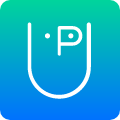This course covers the entite syllabus of grade 9 portion. After the completion of syllabus through board paper discussion is done and startegies are discussed to do well in Exam.
Computer Applications
CLASS IX Code No. 165
Unit 1: Basics of Information Technology
• Computer Systems: characteristics of a computer, components of a computer
system – CPU, memory, storage devices and I/O devices
• Memory: primary (RAM and ROM) and secondary memory
• Storage devices: hard disk, CD ROM, DVD, pen/flash drive, memory stick
• I/O devices: keyboard, mouse, monitor, printer, scanner, web camera
• Types of software: system software (operating system, device drivers),
application software including mobile applications
• Computer networking: Type of networks: PAN, LAN, MAN, WAN, wired/wireless
communication, Wi-Fi, Bluetooth, cloud computers
(Private/public)
• Multimedia: images, audio, video, animation
Unit 2: Cyber-safety
• Safely browsing the web and using social networks: identity protection, proper
usage of passwords, privacy, confidentiality of information, cyber stalking,
reporting cybercrimes
• Malware: Viruses, adware
Unit 3: Office tools
• Introduction to a word processor: create and save a document.
• Edit and format text: text style (B, I, U), font type, font size, text colour, alignment
of text. Format paragraphs with line and/or paragraph spacing. Add headers and
footers, numbering pages, grammar and spell check utilities, subscript and
superscript, insert symbols, use print preview, and print a document.
• Insert pictures, change the page setting, add bullets and numbering, borders and
shading, and insert tables – insert/delete rows and columns, merge and split
cells.
• Use auto-format, track changes, review comments, use of drawing tools, shapes
and mathematical symbols.
• Presentation tool: understand the concept of slide shows, basic elements of a
slide, different types of slide layouts, create and save a presentation, and learn
about the different views of a slide set – normal view, slide sorter view and handouts.
• Edit and format a slide: add titles, subtitles, text, background, and watermark,
headers and footers, and slide numbers.
• Insert pictures from files, create animations, add sound effects, and rehearse
timings.
• Spreadsheets: concept of a worksheet and a workbook, create and save a
worksheet.
• Working with a spreadsheet: enter numbers, text, date/time, series using auto fill;
edit and format a worksheet including changing the colour, size, font, alignment
of text; insert and delete cells, rows and columns. Enter a formula using the
operators (+,-,*, /), refer to cells, and print a worksheet.
• Use simple statistical functions: SUM (), AVERAGE (), MAX (), MIN (), IF ()
(without compound statements); embed charts of various types: line, pie, scatter,
bar and area in a worksheet.
4. Lab Exercises
• Browser settings for a secure connection
• Working with the operating system: Navigation of the file system using a mouse
and keyboard.
• Word processing: create a text document; create a letter, report, and greeting
card.
• Create a text document with figures in it. It should describe a concept taught in
another course.
• Discuss the following in a text document about the basic organisation of a
computer: CPU, memory, input/output devices, hard disk.
• Create a text document in an Indian language other than English.
• Create a presentation.
• Create a presentation with animation.
• Include existing images/ pictures in a presentation.
• Animate pictures and text with sound effects in a presentation
• Create a simple spreadsheet and perform the following operations: min, max,
sum, and average.
• Create different types of charts using a spreadsheet: line, bar, area and pie.




